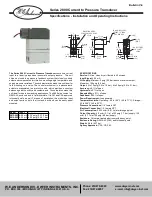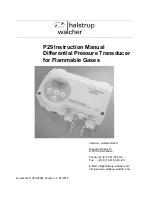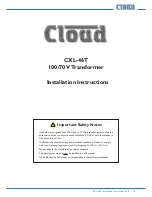
FCC ID: K66FT-857
Operating Manual
Vertex Standard Co., Ltd.
44
microprocessor will ignore any command to attempt automatic matching.
2) Antenna tuning is accomplished using a “CW” carrier, although the mode indication will not change to “CW” (if you
are operating on another mode) during antenna tuning.
3) If you see a “HI SWR” on the LCD, it may mean that there is a problem in your coaxial cable (bad connection, etc.)
which is preventing successful tuning. Replace the cable, or try adding a few feet/meters of cable (to eliminate the
possibility of adverse “transformer action” in the 50
Ω
cable during the tuning process).
4) If you are able to achieve an SWR of less than 2:1 via manual tuning, the FT-857 will “accept” the manual setting, and
you may then re-tune automatically when changing bands. If, however, you stop manual tuning at a non-optimum
setting (SWR >2:1), the FT-857 will not permit further automatic tuning. To refresh the setting of the ATAS-100/-120,
press the [B](DOWN) key until the ATAS-100/-120 fully retracts. You may then restart automatic tuning per the
procedures described earlier.
5) The FT-857 may also be used with the model ATAS-100 antenna, although the tuning speed of the ATAS-100 will be
slower than with the ATAS-120.
ATAS-100/-120 Operating Tips
The information below will help you derive the best performance possible from the ATAS-100/-120 Active-Tuning
Antenna System.
Grounding
It is critically important that you establish a good mechanical and RF ground connection for your ATAS-100/-120 (as
with all vertical antennas). Mobile mounts which are bolted through the vehicle’s roof, or otherwise mechanically affixed,
will usually be satisfactory. However, magnetic mounts do not provide the RF grounding necessary for good performance,
and are not recommended for use with this antenna.
Tuning Procedure
The feedpoint impedance of the ATAS-100/-120 (resistance and reactance) will necessarily vary over a wide range when
you change bands. Occasionally, the transceiver’s microprocessor will not initially be able to determine the proper
direction for the ATAS-100/-120 to travel (inward or outward) for best SWR.
To resolve this situation, the transceiver will then command the ATAS-100/-120 to retract fully to its minimum height,
and thence restart the tuning process. In this instance, the “TUNE” icon will remain on the display after you press the
[A](TUNE) key. If this happens, do not press the [A](TUNE) key repeatedly. The transceiver will remain in the receive
mode as it retracts (this may take up to one minute). Thereafter, the transmitter will be engaged, and the ATAS-100/-120
will be automatically adjusted for best SWR. The “TUNE” icon will then disappear from the LCD, and you will be ready
for operation.
















































